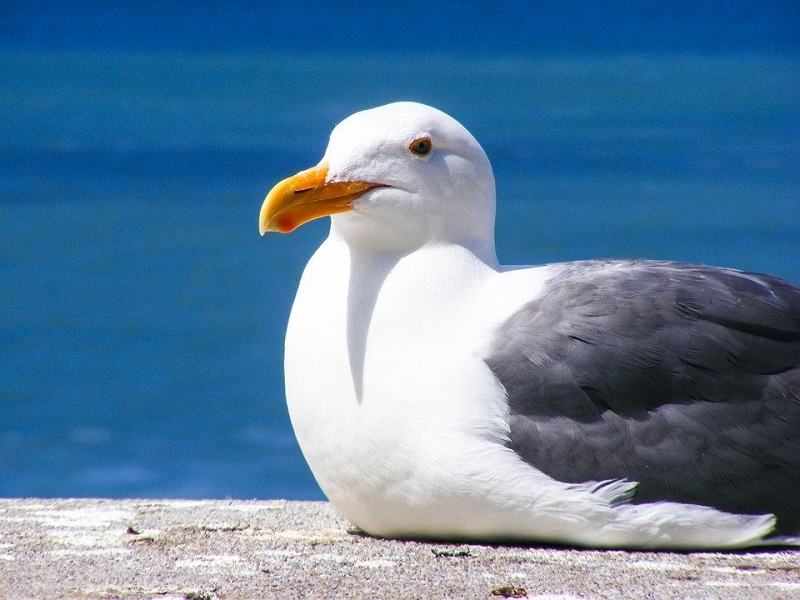Seagulls feed on small marine animals such as fish, crustaceans (crabs, shrimps, etc.), starfish, and mollusks (mussels, clams, oysters).
But they can also feed on plants, insects, worms, earthworms, slugs, snails, small birds (which they attack in flight), bird eggs (others species but also theirs), rats and mice, chicks or small ducks, food scraps, and even carrion (dead animals).
Characteristics of seagulls
Seagulls can be defined as a type of medium to large-sized bird, which lives on the coasts bordering seas, lakes, or lagoons. They have a sturdy body, a broad hooked bill, long wings, a short square tail, and long legs with webbed toes (which allow them to swim). They have a thick plumage that varies between white, gray, and black, a pattern for which they are easily recognized and can sometimes even look very pretty, depending on the combinations that form between the aforementioned colors.
Seagull colonies
The way of life of these so particular birds is to stay in large groups (colonies) and to build their nests with grasses and branches in the dunes of the beaches or on the edges of the cliffs. Typically, seagulls lay 2 to 3 speckled, greenish-brown eggs, which are brood for 20 to 30 days. Anecdotal fact about this species: the parents share the incubation of the eggs and then the care and feeding (by regurgitation) of the chicks.
Seagull life form
Seagulls are easily recognized because they are creatures with diurnal habits, endowed with great intelligence, and possess complex methods of communication. Special fact; they help each other, alerting other seagulls when they spot nearby prey and can be seen flying in circles over food sources. They stir and stir the mud in shallow water to catch the animals there.
If the prey they find is still alive, they usually grab them with the bill and drop them from a height until they die or split open. Their social capacity gives them defense and protection and they can live up to 32 years.

